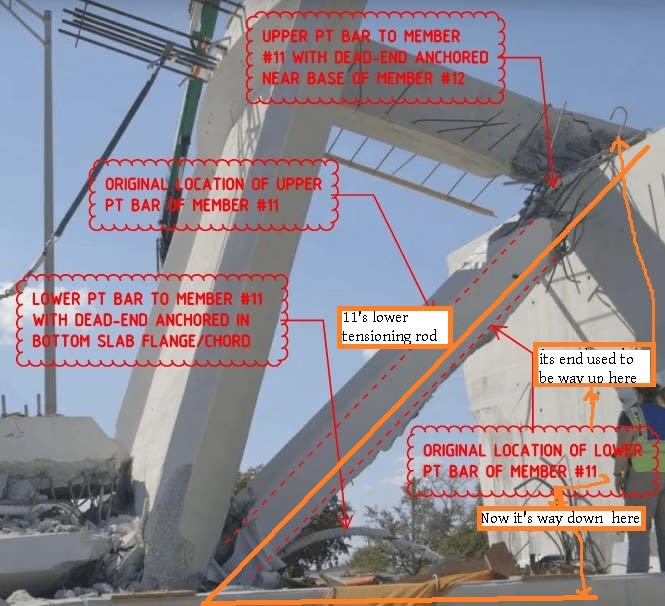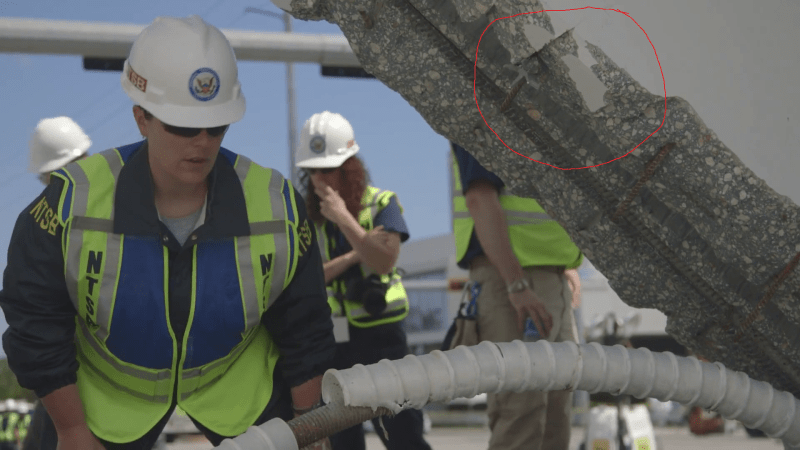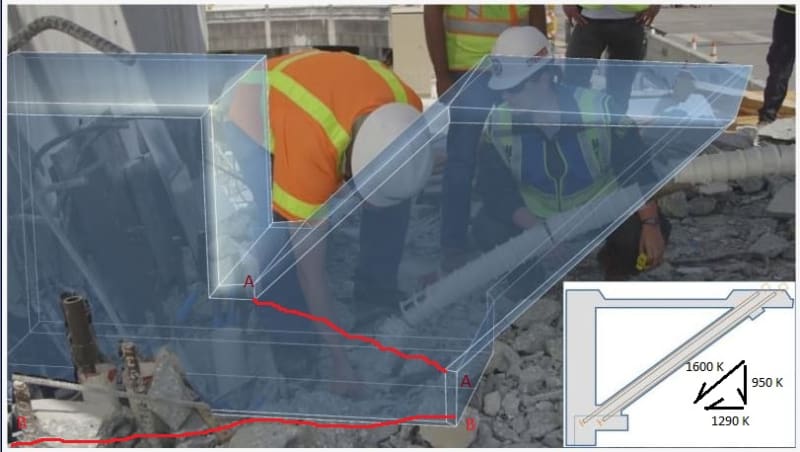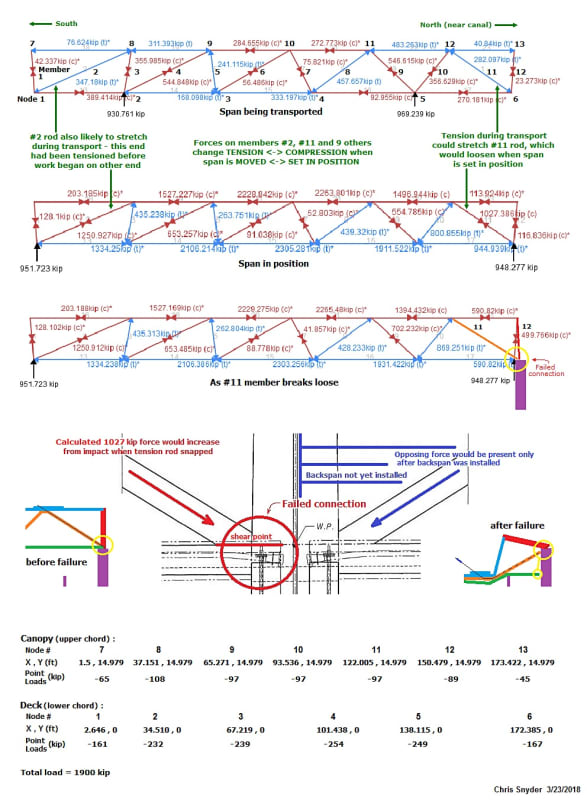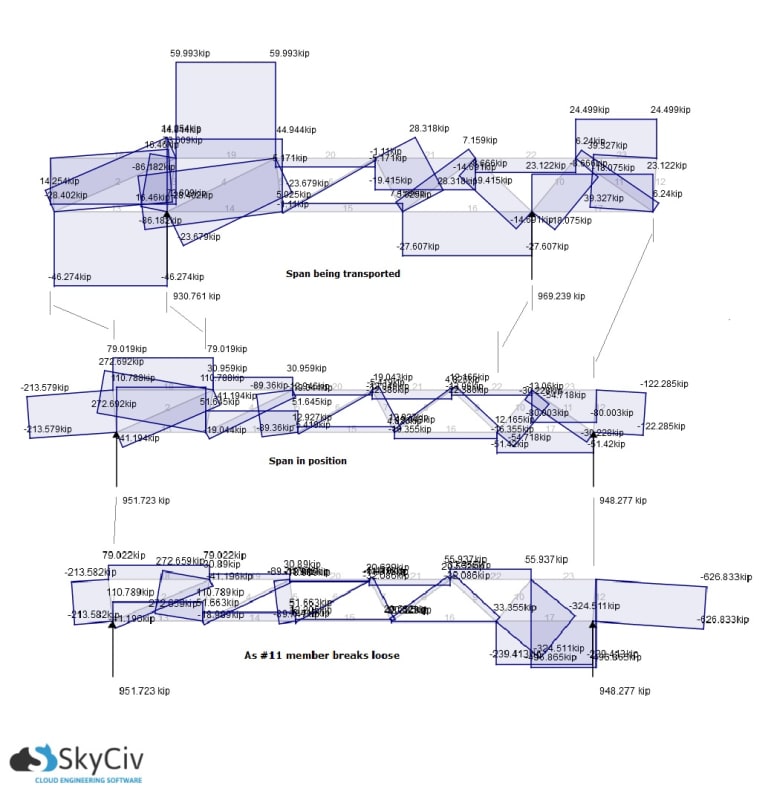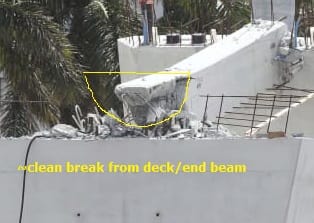Electronics related newbie here... structural engineering is more interesting and REAL - thanks to all for contributions here.
Pls forgive any ignorance and correct me where wrong. I'll try not to repeat (much). Special thanks to LittleInch for the summary.
A structural engineer posted this and said the first diagonal compressive connection failed, and if PT rod broke (per "smoking gun" video) this alone wouldn't cause failure.
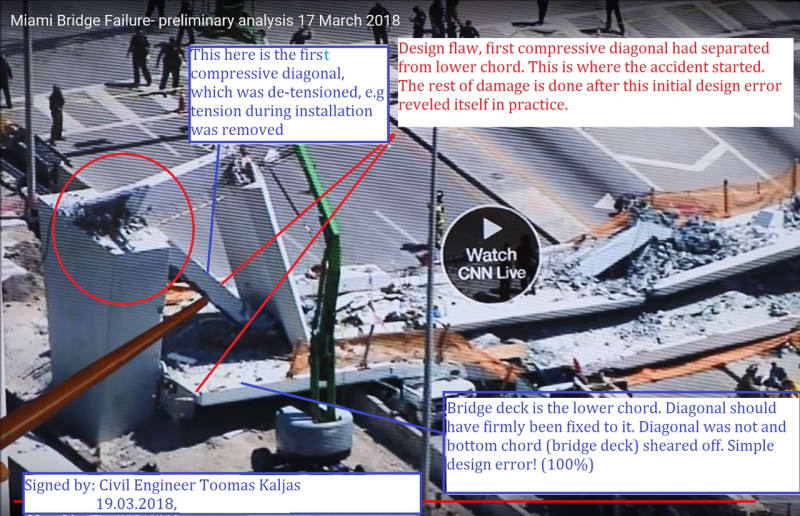
I estimated/calculated centerlines from prints to get nodes (end members not vertical as center of member(s) contact points were used instead of trying to figure center of force), and point loads were estimated by calculating volume of deck, canopy, members, and blisters then dividing into total weight - load was split midway between centerlines and distributed from canopy/blisters to upper nodes, and trusses/deck to lower nodes . Weight came out to 165 lbs/cu ft, which seems heavy (volume calcs didn't include 'gussets'/radius where members meet)- I didn't estimate percentage of steel or air in ducts (calcs may be within 5-10%??). I used online app (SkyCiv) to analyze forces with span being moved (supports not actual SPMT placement - I just wanted to see forces change direction on #2 and #11), with span in position, and when #11 first sheared.
Shear forces under same conditions
#11 was pushing against the edge of the deck - when the bridge was completed, force from the backspan would have countered this. I'd expect a break on the deck as ShearForceEng shows in 25 Mar 18 00:42 - odd how the break of #12 is clean from deck
The PVC tube under deck, cable ducts close by, and little concrete at edge creates a weak point. I'd like to see casting/rebar specs.
The engineer (Toomas Kaljas) who posted the first photo says software may not analyze connection strength, and that some engineers depend too much on software. He stresses this and discusses connection failures in his analysis of the Latvia Maxima collapse.
From the "smoking gun" video, this news video (I agree the "puff" may be the corner of deck from changing angles)
"NTSB Focuses Collapse Investigation on North End of FIU Bridge"
and the NTSB release,
I suspect the lower tension rod in #11 was being tightened and broke. When this happened, whatever force it took to propel the rod/jack (~400 lbs?) an estimated 6 ft from its position may have created an opposite impulse toward the bottom end of #11 and triggered the shear... I can't visualize this, but Newton's third law is true (this is not like a shotgun blast pushing a load, as the force was in front and pulled the rod out).
I have a question about the PT rod specs: Why are there none for #11 and 12 and some others in the table? These show 200-280 kips for most and 320 for #15 (sorry if answered elsewhere - I didn't read some in parts 2 and 3).
From one article, I sensed this final adjustment may have been dealing with closing the crack(s). In any case, it was foolish to do this work with traffic flowing. There was too much emphasis on building this bridge with minimal effect on traffic flow.

